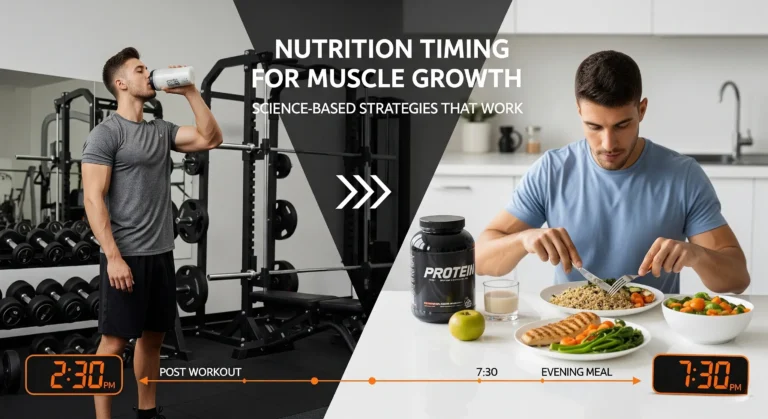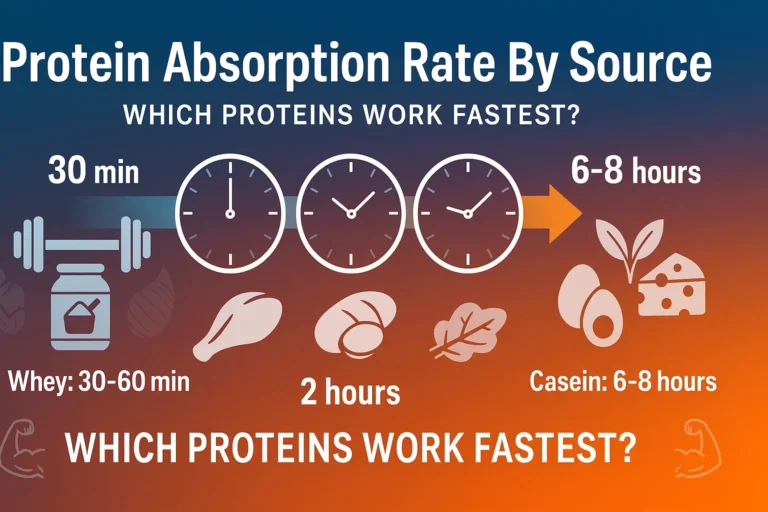
“What is pre-workout?” – I get asked this question at least three times a week at the gym. Did you know that 73% of gym-goers report better workout performance when using pre-workout supplements? But here’s the thing – most people have no clue what they’re actually putting in their bodies or how these colorful powders actually work.
I’ll be honest, when I first started lifting and someone asked me “what is pre-workout,” I thought it was just expensive flavored caffeine. Boy, was I wrong! After years of experimenting (and making plenty of mistakes), I’ve learned there’s way more science behind these supplements than meets the eye.
So what is pre-workout exactly? In simple terms, it’s a supplement designed to boost your energy, focus, and performance before you exercise. But there’s so much more to understand about how it actually works in your body and whether it’s right for your goals.
In this guide, I’ll break down exactly what pre-workout is, how it works in your body, and whether it’s something you should consider adding to your routine. No fluff, just the facts you need to make an informed decision.
What is Pre-Workout? (The Simple Explanation)
Okay, let’s start with the basics because I remember being completely lost when I first walked into a supplement store. Pre-workout is essentially a blend of ingredients designed to boost your energy, focus, and performance before you hit the gym. Think of it as rocket fuel for your workout session.
Most pre-workout supplements come in powder form that you mix with water, but you’ll also find capsules, ready-to-drink beverages, and even gummies. I’ve tried them all, and honestly, the powder form usually gives you the most bang for your buck.
Here’s where I made my first mistake though. I thought all pre-workouts were created equal and just grabbed the flashiest container. Wrong move! Some are designed for strength training with ingredients like creatine, while others focus purely on energy and endurance for cardio sessions.
The timing aspect is huge too, and this took me way too long to figure out. Most pre-workouts need about 20-30 minutes to kick in, so you can’t just chug it as you’re walking into the gym. I learned this the hard way when I’d finish my entire workout before feeling any effects!
What really separates pre-workout from your regular cup of coffee or energy drink is the combination of ingredients working together. It’s not just about caffeine – though that’s usually the star of the show. You’re getting a cocktail of compounds that target different aspects of your workout performance.
Key Ingredients in Pre-Workout and What They Do
This is where things get interesting, and honestly, where most people get overwhelmed. Let me break down the main players you’ll see on almost every pre-workout label.
Caffeine is the obvious one – usually between 150-400mg per serving. For reference, a cup of coffee has about 95mg, so we’re talking serious energy here. I made the mistake early on of taking a high-caffeine pre-workout at 6 PM. Let’s just say I was staring at the ceiling until 2 AM that night!
Beta-alanine is the ingredient that makes you feel like ants are crawling under your skin. Seriously, the first time I felt that tingling sensation, I thought I was having an allergic reaction. Turns out it’s completely normal and actually means it’s working to buffer acid in your muscles during intense exercise.
Creatine is another common addition, usually around 3-5 grams per serving. This stuff helps with short bursts of power and strength. I noticed a real difference in my ability to push out those last few reps when my pre-workout contained creatine.
Citrulline (or citrulline malate) is what gives you those awesome muscle pumps. It increases blood flow to your muscles, making them feel fuller and more vascular. The recommended dose is usually 6-8 grams, but many pre-workouts under-dose this ingredient to save money.
B-vitamins are thrown in to support energy metabolism. They’re not going to make or break your workout, but they help your body process all the other ingredients more efficiently.
Then you’ve got all the artificial sweeteners and flavoring agents to make it actually taste decent. Some people are sensitive to these, so it’s worth noting if you experience any digestive issues.
How Pre-Workout Works in Your Body (The Science Made Simple)
Alright, let’s get nerdy for a minute, but I’ll keep it simple. When you down that pre-workout drink, your body goes through some pretty cool changes.
Within the first 15 minutes, the caffeine starts hitting your bloodstream and making its way to your brain. It blocks adenosine receptors, which are basically the things that make you feel tired. This is why you suddenly feel more alert and focused.
The beta-alanine gets to work buffering lactic acid in your muscles. This is the stuff that makes your muscles burn during high-intensity exercise. By reducing this buildup, you can potentially push harder for longer periods.
If your pre-workout contains citrulline, it’s converting to arginine in your kidneys, which then boosts nitric oxide production. This causes your blood vessels to dilate, increasing blood flow to your working muscles. That’s where the pump comes from!
Here’s something I wish I knew earlier – not all ingredients work immediately. Creatine, for example, works best when you have consistent levels in your muscles over time. Taking it once won’t do much, but taking it regularly builds up muscle creatine stores.
The whole process peaks around 30-45 minutes after consumption, which is why timing your pre-workout intake is so crucial. I used to wonder why some days felt amazing and others felt flat – turns out it was all about when I was taking it relative to my workout start time.
Your liver does most of the heavy lifting when it comes to processing these compounds. Caffeine has a half-life of about 5-6 hours, which explains why taking pre-workout too late can mess with your sleep schedule.
Benefits You Can Actually Expect from Pre-Workout
Let me be real with you about what pre-workout can and can’t do. I’ve seen people expect it to transform them into the Hulk overnight, and that’s just not realistic.
The most noticeable benefit is increased energy and alertness. On days when I’m dragging myself to the gym after work, pre-workout genuinely helps me feel more motivated to actually put in effort. It’s like flipping a switch from “I don’t want to be here” to “let’s do this.”
Enhanced focus is another big one that I didn’t expect initially. There’s something about the combination of caffeine and other nootropic ingredients that helps you really zone in on your workout. I find myself more aware of my form and more connected to what I’m doing.
Muscular endurance improvements are legit too. I can usually squeeze out an extra rep or two on my final sets when I’ve had pre-workout versus when I haven’t. It’s not earth-shattering, but over time, those extra reps add up.
The muscle pumps from ingredients like citrulline are more cosmetic than functional, but they sure make you feel good during your workout. There’s nothing wrong with enjoying that feeling – it can actually boost confidence and motivation.
If your pre-workout contains creatine, you might see some strength gains over time. But remember, this is a gradual process, not something you’ll notice after one serving.
Here’s what you shouldn’t expect: pre-workout won’t make up for poor sleep, bad nutrition, or inconsistent training. It’s a tool to enhance what you’re already doing right, not a magic fix for what you’re doing wrong.
Common Side Effects and How to Avoid Them
Okay, storytime. My first experience with high-stim pre-workout was… interesting. I took a full scoop of something with 350mg of caffeine, having never had more than a cup of coffee in my life. I spent the first 20 minutes of my workout convinced my heart was going to explode.
The crash is probably the most common complaint I hear. What goes up must come down, and caffeine is no exception. To minimize this, I’ve learned to time my pre-workout so the crash happens after my workout, not during it. Also, staying hydrated and having a small meal afterward helps tremendously.
Jitters and anxiety are signs you’ve taken too much stimulant for your tolerance level. Start with half a scoop if you’re new to pre-workout, seriously. Your tolerance will build over time, but there’s no point in suffering through anxiety-inducing doses right off the bat.
Digestive issues are surprisingly common, especially if you take pre-workout on an empty stomach. I learned to have a small snack about an hour before taking my pre-workout. Nothing heavy, just maybe a banana or some crackers.
Sleep disruption is a big one that catches people off guard. Even if you work out at 5 PM, that caffeine could still be affecting your sleep at 11 PM. I made it a rule to never take pre-workout after 2 PM, and my sleep quality improved dramatically.
The beta-alanine itch freaked me out initially, but it’s completely harmless. Some people love it because it makes them feel like the pre-workout is “working,” while others find it distracting. If you can’t stand it, look for pre-workouts without beta-alanine.
If you start experiencing any chest pain, severe headaches, or irregular heartbeat, stop taking pre-workout immediately and talk to a doctor. These aren’t normal side effects and shouldn’t be ignored.
Who Should (and Shouldn’t) Use Pre-Workout
This is where I need to put on my responsible adult hat for a minute. Pre-workout isn’t for everyone, and there are some people who should definitely avoid it.
Ideal candidates are usually experienced lifters who understand their caffeine tolerance and have consistent workout routines. If you’re someone who works out first thing in the morning and struggles with energy, pre-workout can be a game-changer.
People who’ve hit training plateaus might benefit from the extra push pre-workout provides. Sometimes you need that mental boost to break through barriers and try harder than you normally would.
However, if you have any heart conditions, high blood pressure, or anxiety disorders, you should probably steer clear of stimulant-based pre-workouts. The caffeine and other stimulants can exacerbate these conditions.
Pregnant and breastfeeding women should avoid pre-workout supplements entirely. There’s just not enough research on how these ingredients affect developing babies, and it’s not worth the risk.
I get asked about teenagers using pre-workout a lot. Honestly, most teens have plenty of natural energy and don’t need additional stimulants. If anything, teaching proper nutrition and sleep habits will serve them better long-term.
If you’re on any medications, especially for blood pressure, heart conditions, or mental health, check with your doctor before adding pre-workout to your routine. Some ingredients can interact with medications in ways you might not expect.
People who are sensitive to caffeine or have trouble sleeping should either avoid pre-workout or look for stimulant-free versions. There are some decent options out there that focus on pumps and endurance without the caffeine.
How to Choose the Right Pre-Workout for Your Goals
Shopping for pre-workout can be overwhelming with all the flashy marketing and ridiculous names. Here’s how I approach it now after years of trial and error.
First, figure out your caffeine tolerance. If you can handle 2-3 cups of coffee without getting jittery, you can probably handle 200-300mg of caffeine in pre-workout. If you’re sensitive to caffeine, look for low-stim options with 100-150mg or go stimulant-free altogether.
Consider your training style too. If you’re doing heavy strength training, look for pre-workouts with creatine and ingredients that support power output. For cardio or endurance training, focus on options with more citrulline for blood flow and ingredients that support sustained energy.
Budget matters, and expensive doesn’t always mean better. I’ve found great pre-workouts for $25-30 that work just as well as $50+ options. The key is looking at the ingredient profile rather than the marketing hype.
Read the labels carefully and avoid proprietary blends when possible. These blends hide the actual amounts of each ingredient, so you have no idea if you’re getting effective doses. Transparent labeling is always better.
Look for third-party testing certifications, especially if you compete in any sports. Some supplements can contain banned substances, and it’s better to be safe than sorry.
Don’t get swayed by crazy flavors or packaging. I’ve learned that the most effective pre-workouts often have the most boring labels. Focus on what’s inside, not what’s outside.
Conclusion
Pre-workout supplements can be a valuable tool in your fitness arsenal, but they’re not magic pills that’ll transform your workouts overnight. The key is understanding what you’re taking, why you’re taking it, and whether it aligns with your specific goals and health situation.
Remember, the best pre-workout routine is one that’s consistent and sustainable. Start with a lower dose, pay attention to how your body responds, and don’t become dependent on it for every single workout. Some of my best training sessions have happened without any pre-workout at all.
The foundation of good workouts will always be proper sleep, nutrition, and consistent training. Pre-workout can enhance these fundamentals, but it can’t replace them. Use it as a tool when you need that extra push, not as a crutch for poor lifestyle habits.
Have you tried pre-workout before? Drop a comment below and share your experience – both the good and the not-so-good! Your story might help someone else make a better decision about whether pre-workout is right for them.



